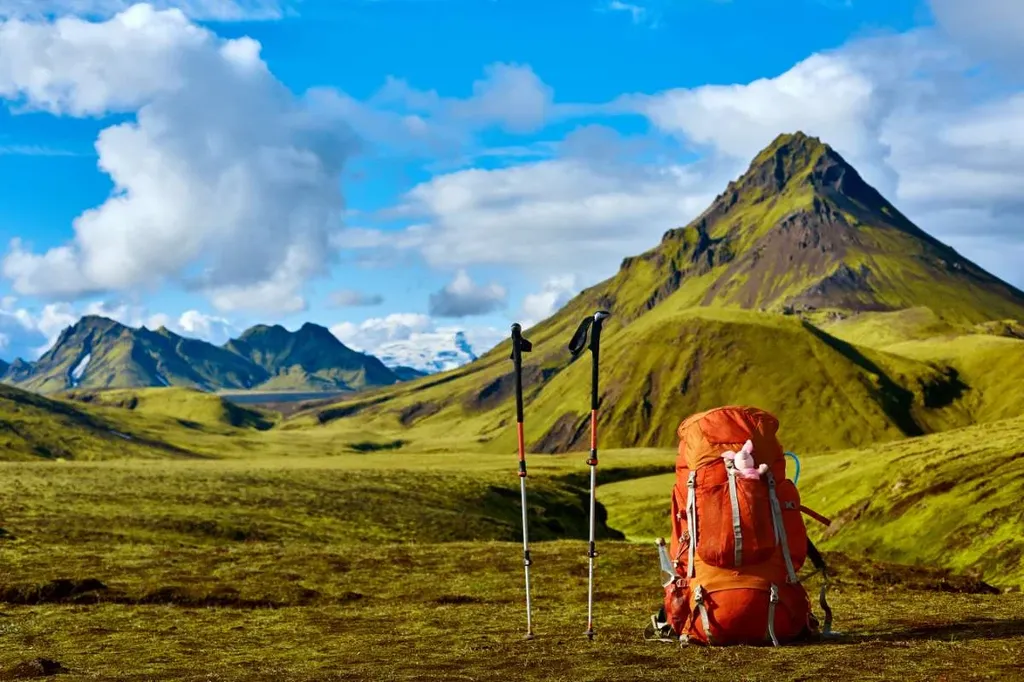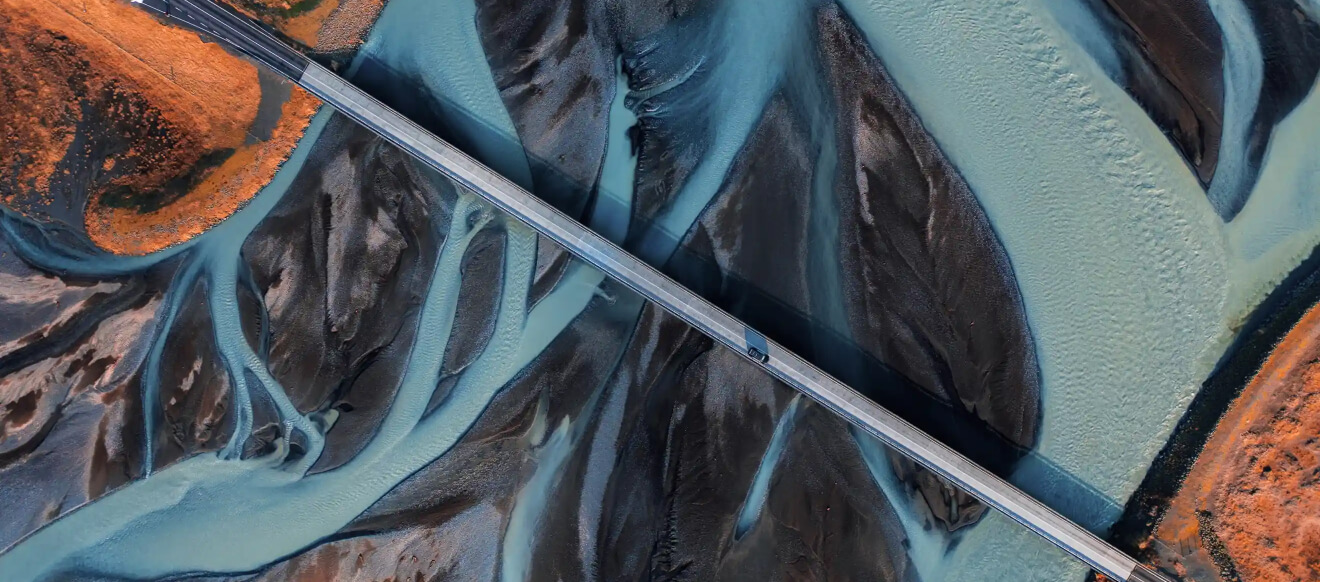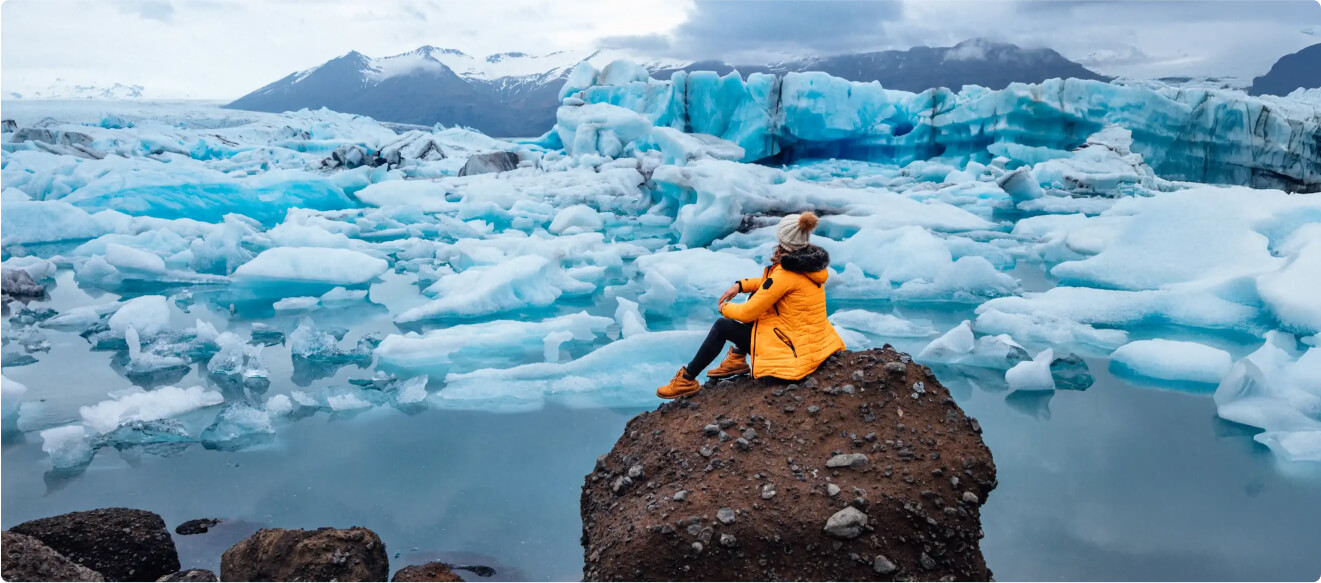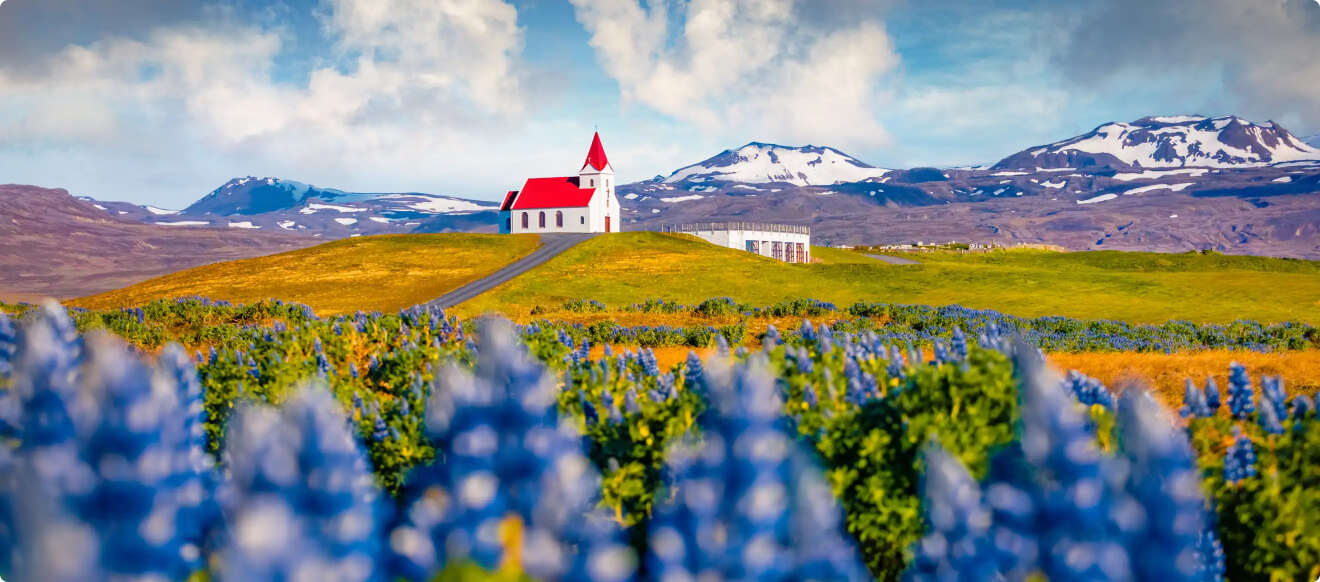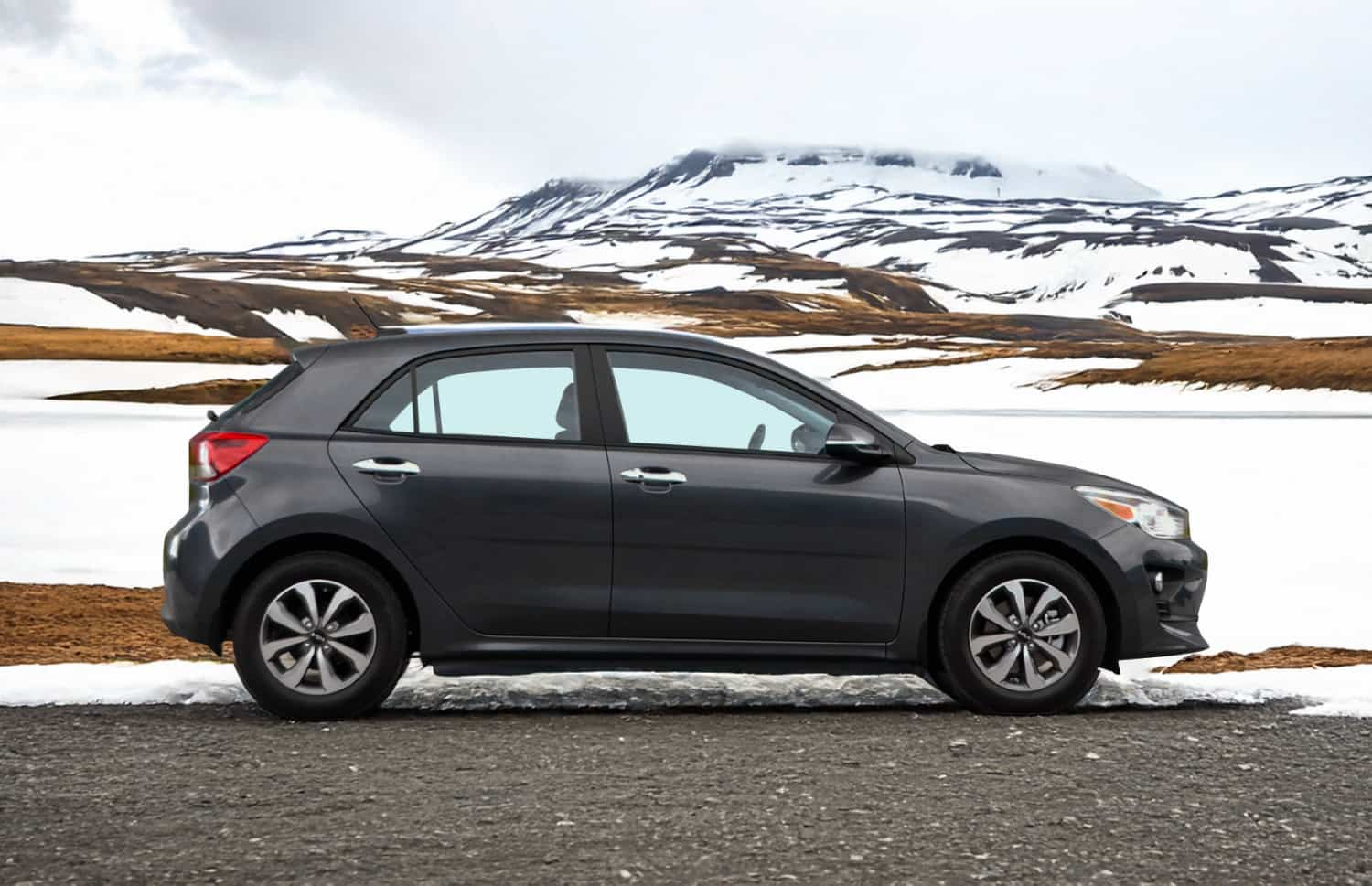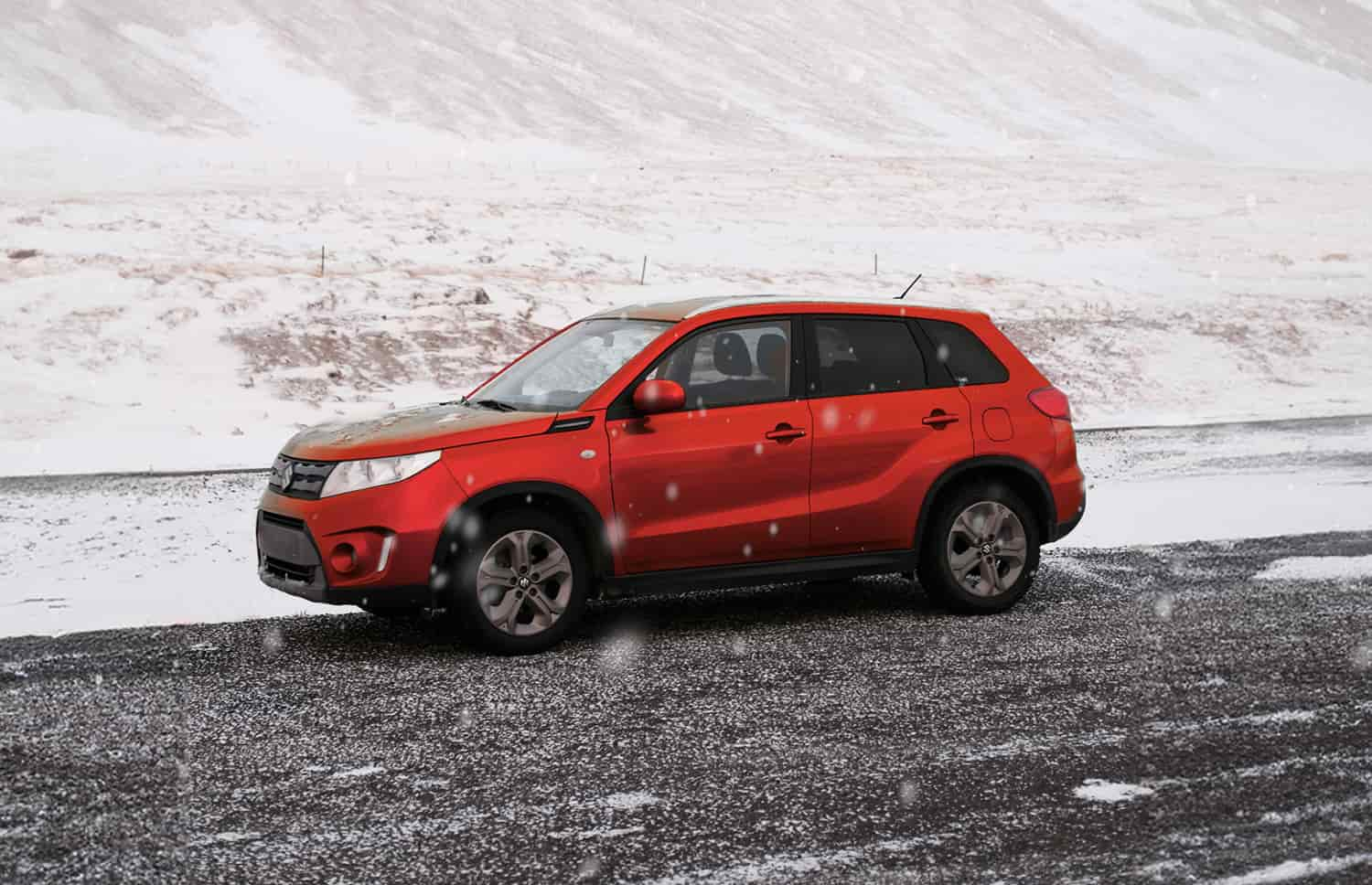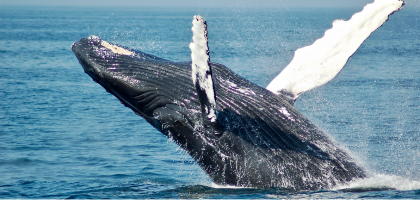Hiking in Iceland is one of the best things to do in Iceland, let alone the best way to explore the country. Imagine the naturally crafted mountains, the kaleidoscopic terrain, and the snow-coated peaks. Let's not forget active volcanoes, black lava fields and glittering glaciers. Even gigantic waterfalls and geothermal hot springs; who wouldn't want to see this heaven on earth?
However, you need to make sure that you have done your research, packed the right kind of gear, and are ready to conquer the trails. Should you start with some easy trails in Iceland before trying the more daunting ones? How challenging can this experience get, and what are the best routes for hiking in Iceland? What kind of stuff should you pack and what hazards should you look out for?
It is natural to have so many questions when planning your trip to Iceland, and you will find all the answers here, in our ultimate guide to hiking Iceland.
What Makes Hiking in Iceland so Special?
Iceland backpacking trails are special; they make you feel like magic is lurking around every corner. But many of the amazing sights in Iceland cannot be accessed by road alone; which is why hiking in Iceland is a great choice for exploring the country.
Hiking across Iceland has a lot to offer; from waterfalls to glaciers, from geothermal activity to unbelievable rock formations. In other countries, you might be lucky to see one of these on a hike; in Iceland you’ll likely see them all! For example, the Landmannalaugar trail lets you experience glaciers, ancient volcanoes and rivers all on the same hike!
If hiking across mountains, fields and beaches don’t excite you, how about hiking across an Icelandic glacier? Glaciers make up 11% of Iceland’s surface, and you can hike right across them. Where else in the world can you do that!
When discussing what makes hiking in Iceland so special, we can’t forget the Midnight Sun. Hiking across Iceland in summertime comes with the benefit of endless daylight. That gives hikers more hours in which to view the endlessly beautiful landscape.
The weather in Iceland has a tough reputation, but the temperature is actually pretty good for hiking, especially in the summer. Iceland’s average summer temperature is 10 °C with a cool breeze. This makes it not too hot and not too cold.
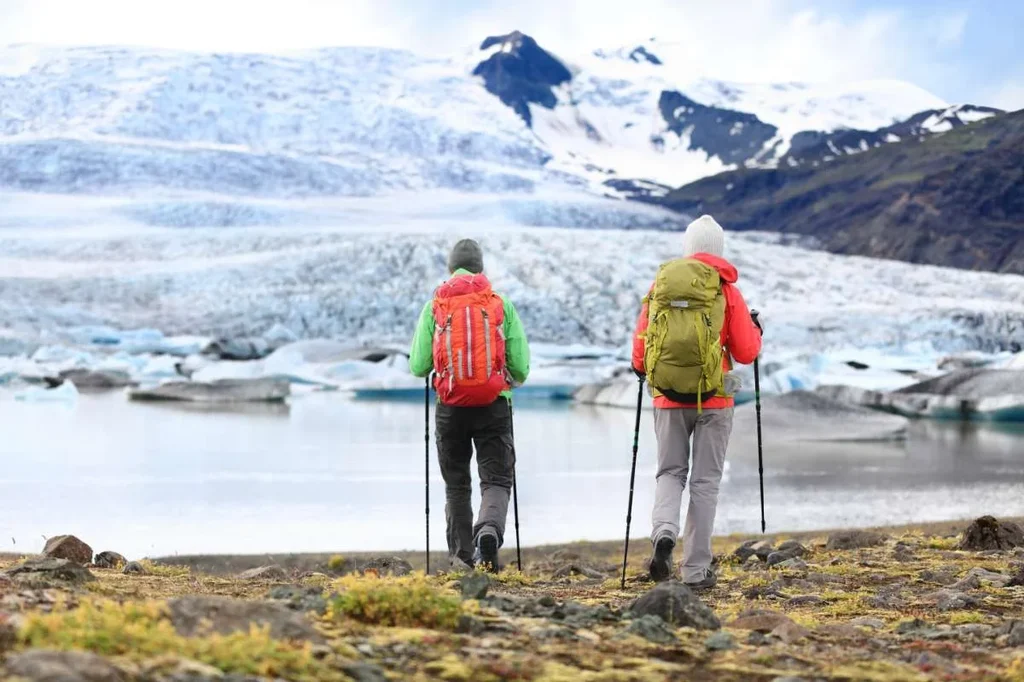
How to Prepare Yourself for Hiking in Iceland?
Just like in any other part of the world, hiking across Iceland requires planning, packing, and being prudent. You need to have a good estimate of how long you are going to hike for and what the weather conditions might be. Let's not forget about what the worst-case scenarios are and how you will deal with them if anything goes wrong.
First, start by evaluating your health and fitness. Research the Iceland backpacking trails thoroughly. Read through reviews of popular trails, examine pictures, so you know what you are signing up for, and make sure to check a map.
If you are hiking for a few hours, pack lightly and know the estimated return time. If you are going to hike for a couple of days, you need to make sure you have all the things you may need.
You must tell someone about your trekking plans. In case you don’t return at the estimated time or day, the concerned person can inform emergency services. You can register your travel plans with SafeTravel.is and check in with them for weather alerts and travel conditions.
During trekking, keep your cellphone with you so that in case of emergencies, you can call for help. The Visit Reykjavík website has a list of important phone numbers you may need during your trip; make sure to save these into your phone.
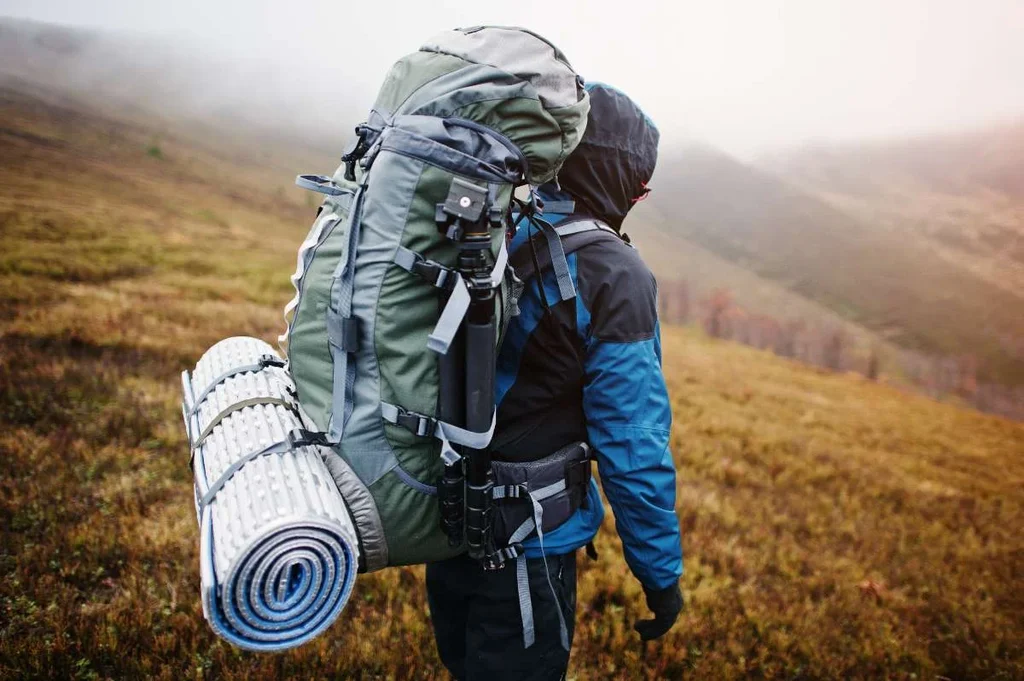
What To Wear Hiking In Iceland
Whether you’re hiking in Iceland in winter, or hiking in Iceland in Summer, here are some tips on dressing appropriately for your hike.
- Base Layer: Ensure you have a base layer of clothing made from wool, silk or polyester. The aim of a base layer is to wick moisture away from your skin and provide quick-drying insulation. Don’t wear a cotton base layer, as it will absorb your sweat and make you colder.
- Mid-Layer: The next layer should provide insulation and retain body heat, while remaining breathable. Wool, fleece or goose down are good choices for a mid-layer.
- Outer Shell: The outer layer or top layer is there to protect all your other layers. This is essential if you’re hiking in Iceland when raining or snowing. This layer should be lightweight and quick-drying, so choose something made from Gore-Tex or eVent.
- Footwear: A common question is what hiking shoes to wear in Iceland. The answer is to choose some sturdy hiking boots or hiking shoes, and team them up with a pair of wool or synthetic socks.
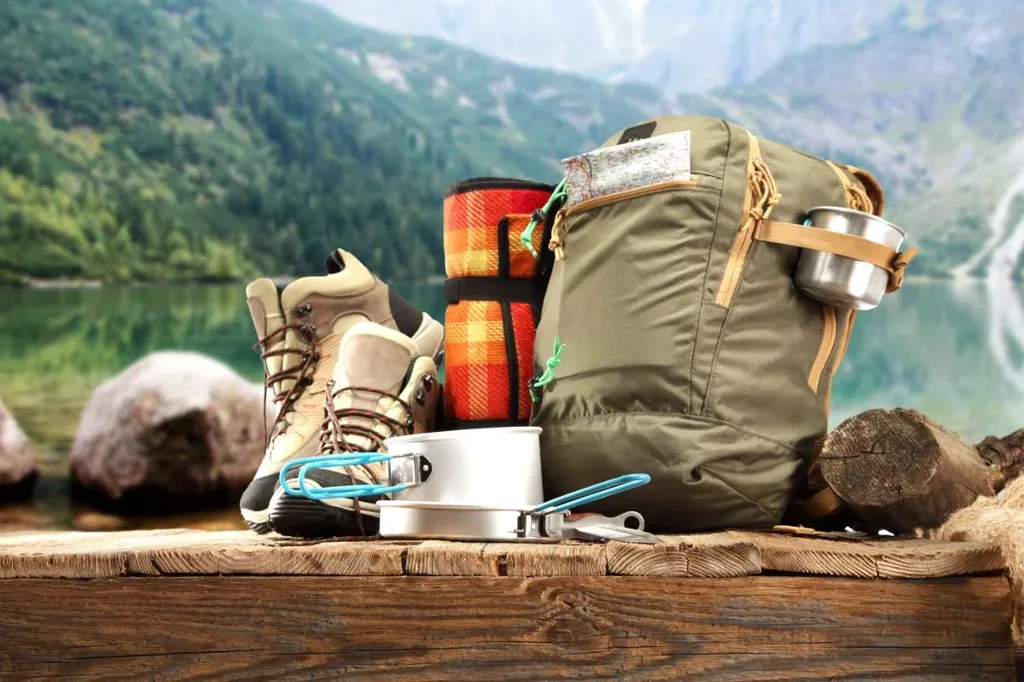
What To Pack When Hiking In Iceland
We know that planning a packing list for your Iceland trip is no easy task. And now, to top everything, you're left wondering what to pack for a week hiking in Iceland in summer. Does it even differ from hiking in Iceland in winter? In truth, packing for hiking in Iceland is similar no matter the season; there are a few staple items you should take with you.
- First Aid kit: Your first aid kit should include bandages, blister pads, disinfectant wipes, hand sanitizer, painkillers. A multi-tool such as a Swiss Army knife would be useful too.
- Water: It is suggested that you’ll need 1 liter of water for every two-hour hike. There will often be water sources along the trails of longer hikes.
- Snacks and Food: Trail mix or granola bars are ideal for shorter hikes. Energy bars and energy drinks are good for more strenuous hikes.
- Sun Protection: In cooler countries such as Iceland, it’s easy to forget sunscreen. Protect your eyes with sunglasses, and protect your skin with a high SPF cream.
- Map & Compass: Google Maps is fine, so long as you have signal and battery power. Now, the moment you step out of range, you’ll need a good old-fashioned hiking trails Iceland map and compass.
- Personal Location Beacon: If you find yourself in trouble on the trail, you’ll want a way to call for help. Personal Location Beacons can be rented from SafeTravel.is. A PBL is a personal electronic transmitting device that is designed to alert potential rescuers to a life-threatening situation.
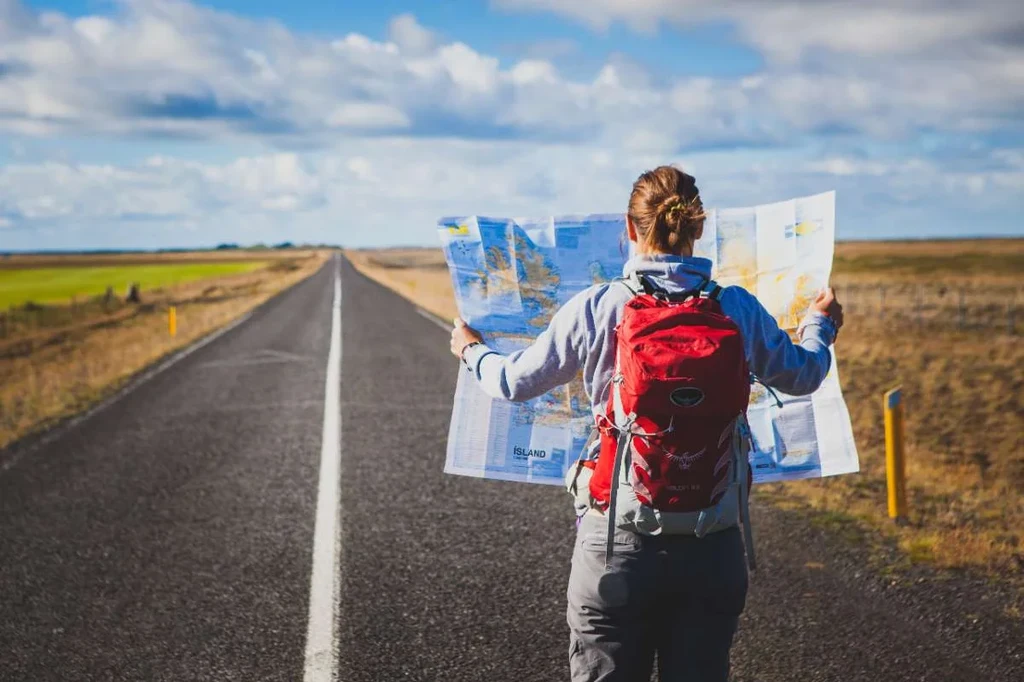
What Else Do I Need To Prepare For Hiking In Iceland?
- Weather: Knowing what the weather is like in Iceland is a must when it comes to hiking. Check the forecast every day, and be prepared for the weather to change, sometimes rapidly and dramatically.
- Fatigue And Tiredness: Consider you and your group’s personal fitness level. Research which trails might be best for you, and plan rest breaks.
When is the Best Time to Hike in Iceland?
The best time to hike in Iceland is between May and September. These are the summer months and when trails are accessible. There is also the most daylight, so you’ll be able to hike for a little longer.
If you’re visiting in May, mountainous trails or trails with high altitudes will likely still have snow on them. A hike to Storurd, for example, is not recommended in May for that exact reason.
In the autumn and winter months, you will find certain roads are closed, such as roads into the Highlands. No road access means there is no way to reach the hiking trail. Make sure to do your research when choosing a hiking trail in Iceland to avoid disappointment in the form of a closed road.
How To Go Hiking Solo In Iceland
Many people choose to visit Iceland alone and hike solo. It certainly has its risks, but it can be very rewarding and empowering. If you choose to hike solo, make sure to read the advice we’ve listed above; especially the part about personal location beacons.
According to the global peace index, Iceland is the most peaceful place in the world! Crime is very low, making it a safe place for solo travelers and solo female travelers. Any danger you may encounter will likely be because of the terrain, not the people.
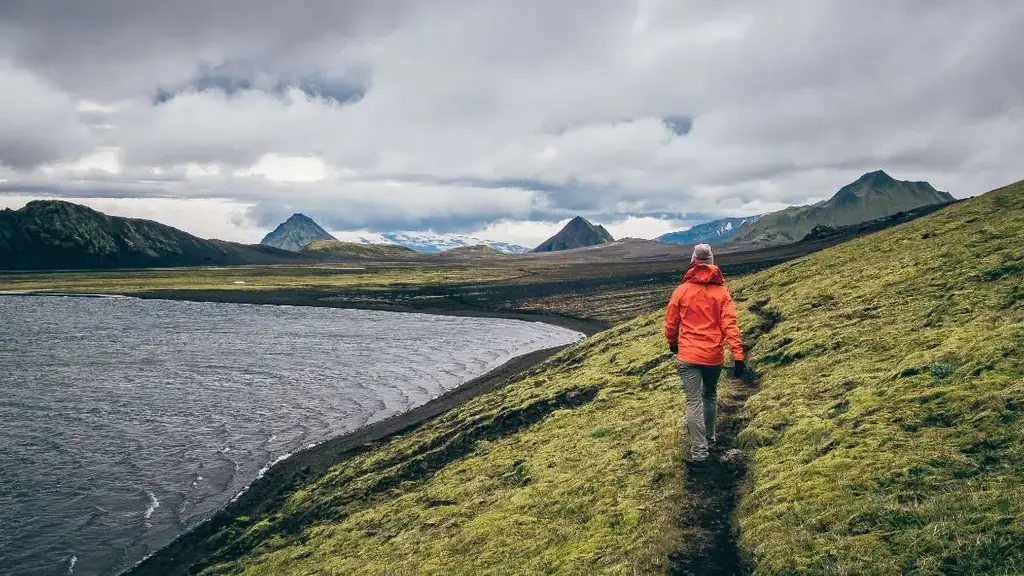
The Best Hikes in Iceland
Hiking in Iceland is exhilarating; every single region of the island has unique trails that implore you to overcome and conquer them. Whether you are interested in hiking Northern Iceland trails and catching a glimpse of the Northern Lights, or you have a list of the best hikes in South Iceland, you have so many paths to choose from. The national parks, as well as most of the campsites in Iceland, have access to hiking trails with different levels of difficulty.
This Iceland hiking guide will present you with the best hiking trails in Iceland. We'll also introduce multi-day hikes, the best day hikes in Iceland and hikes near Reykjavík.
Landmannalaugar Hiking Trails: The Best Day Hikes in Iceland
Landmannalaugar is home to the best and the most famous Iceland backpacking trails in the country. That's due to its beautiful landscape and geothermal rivers and streams.
Landmannalaugar is in the central Highlands, which is only open to hikers in the summer months. Provided that the weather conditions are favorable, of course. Hiking across Iceland doesn’t have to take up your whole holiday; these trails can all be completed in under a day.
You have the option to go for three main hikes in Landmannalaugar the area:
- Mount Blahnjukur (“The Blue Peak”): On this hour-long hike, you will be mesmerised by the black and blue hues from the lava rocks.
- Laugahraun lava field to Mount Brennisteinsalda: This two-hour stroll from Mount Brennisteinsalda will take you through the most colorful mountain in Iceland. Enjoy deep reds from the iron, emerald greens from the moss, and dark blue ash from the volcano.
- Ljotipollur Crater Lake: The four-hour-long hike takes you to a beautiful lake surrounded by rich red slopes. The name Ljotipollur means “ugly lake”, but don’t let that fool you; this place is gorgeous!
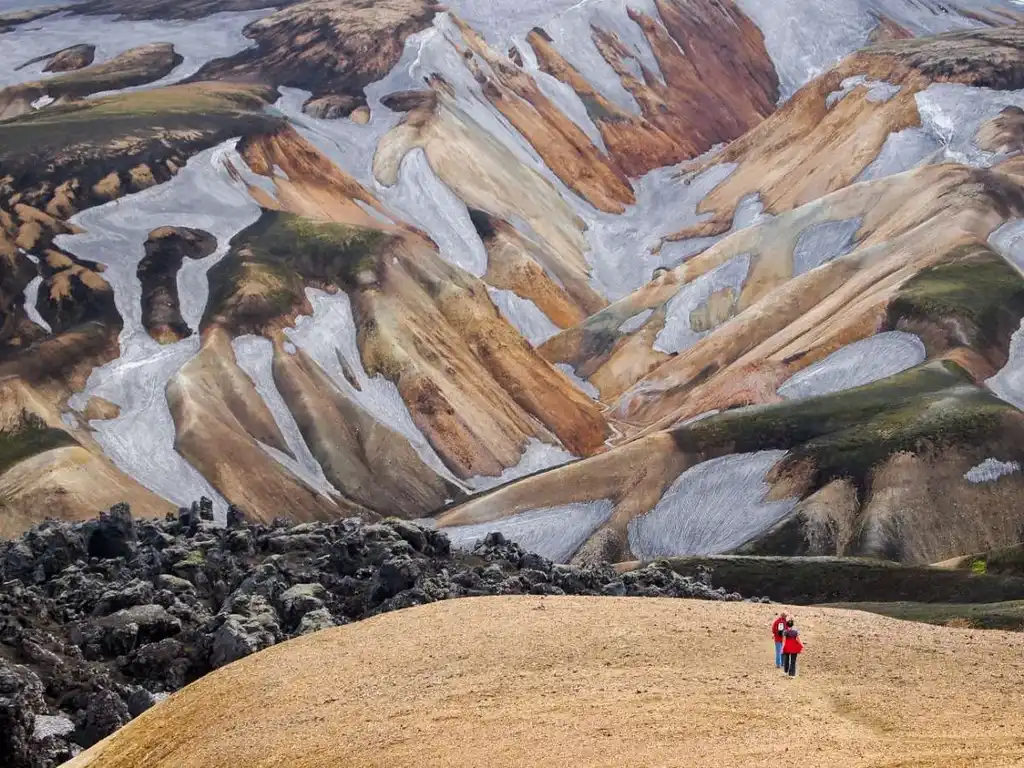
Laugavegur Trail: Most Famous Hiking Trail in Iceland
Our hiking guide to Iceland wouldn’t be complete without Laugavegur to Thorsmork, Iceland’s most famous hiking trail. It lets you enjoy the breathtaking views of multicolored mountains, moss-covered slopes. But also of the jet-black lava fields, and a natural hot spring.
The Laugavegur hike could take 2 to 4 days, covering a route that is 34 miles (55 km) long. You can stay overnight at the Alftavatn mountain huts.
The best time to go trekking on the Laugavegur trail is from late June to early September. The rest of the year, the trail is covered in a thick blanket of snow.
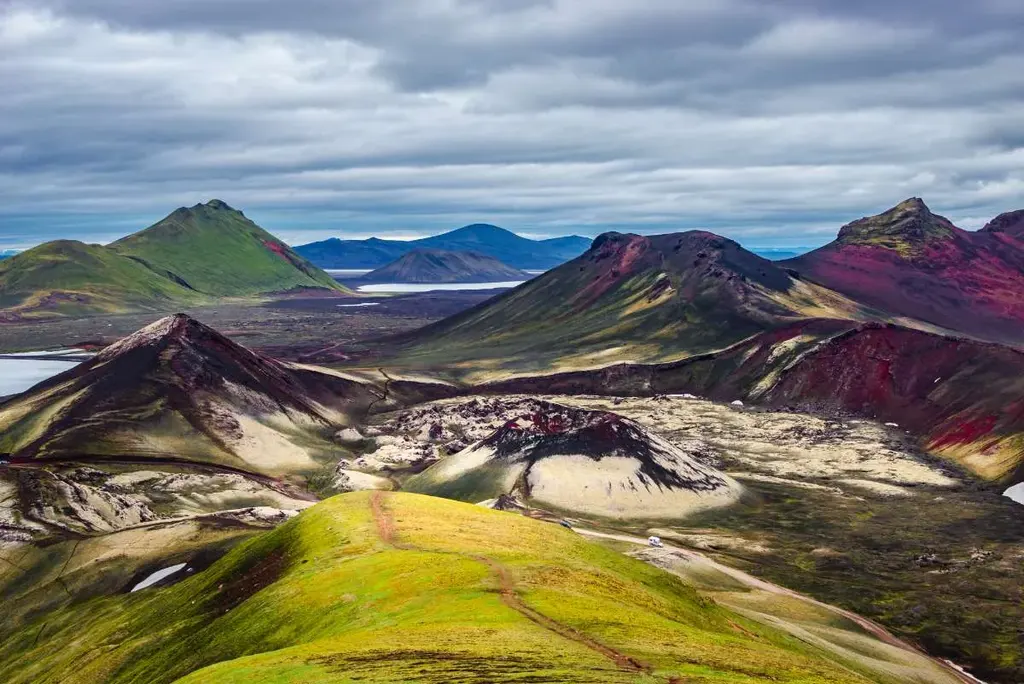
Fimmvorduhals Trail
The Fimmvorduhals hiking trail starts from Thorsmork and finishes off at Skogar, covering 15.5 miles (25 km). It is considered to be Iceland’s second most famous trail.
The word Fimmvorduhals means ‘five cairns pass’. Although the original cairns are no longer in use, the path is popular among Icelanders as well as the travelers.
This trail takes you along a river into the mountains, and you can see several waterfalls on your way. You can trek it in 10-12 hours, but it is better to spend 2 days exploring it and taking in the beauty.
One of the best parts about hiking across Iceland is that you can connect to different hiking routes. For example, you can extend your Laugavegurinn hike by adding the Fimmvorduhals trail to it.
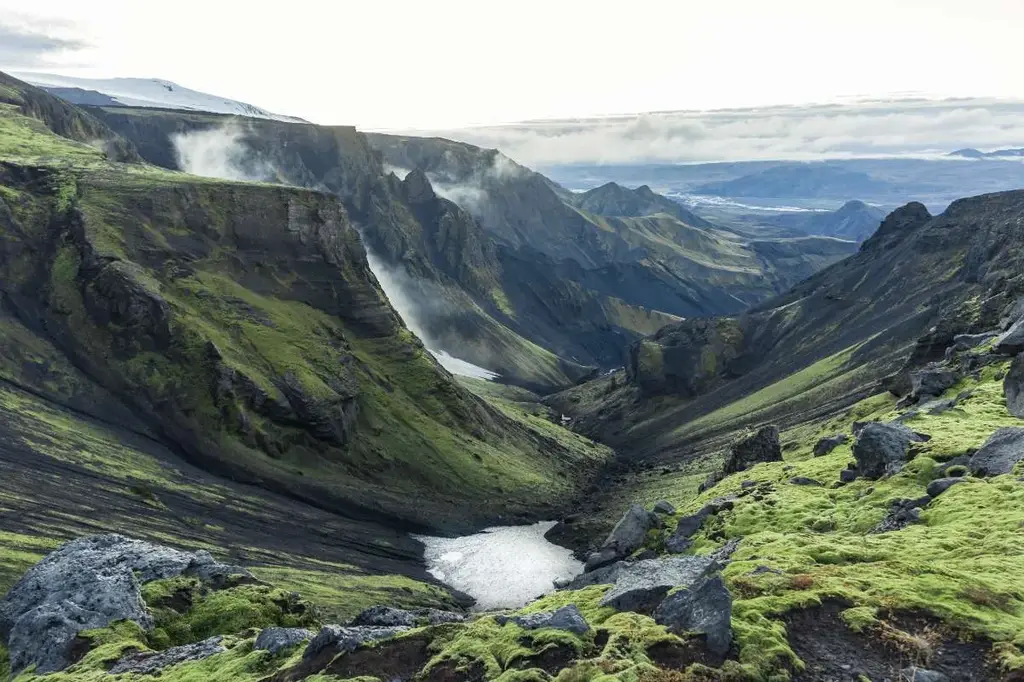
The Hornstrandir Trek
In the Westfjords, you will find the remote area of Hornstrandir Nature Reserve. The area is well-known for its untouched natural beauty, bird cliffs, and arctic foxes. There are no shops, roads, or any such development, so you will need to bring everything (you will have to stay here for at least one night). You are only allowed to hike here from June to the middle of August.
This trail is the most adventurous and daunting in our hiking guide to Iceland. You may not see any other person for days while you trek here.
You can only access this nature reserve by boat. You will then hike 9 miles (15 km) from the harbor of Hesteyri to the stunning Hloduvik bay, taking somewhere between 4 and 6 hours.
Then, you can set up your camp at Hesteyri for the night, and the next day climb the steep Skalarkambur slopes to get a picturesque view of the nearby creeks. Trekking through Reykjavík and Hornvik, you will reach the top of the Hornstrandir Nature Reserve. There, you'll witness the most amazing bird cliffs of Europe.
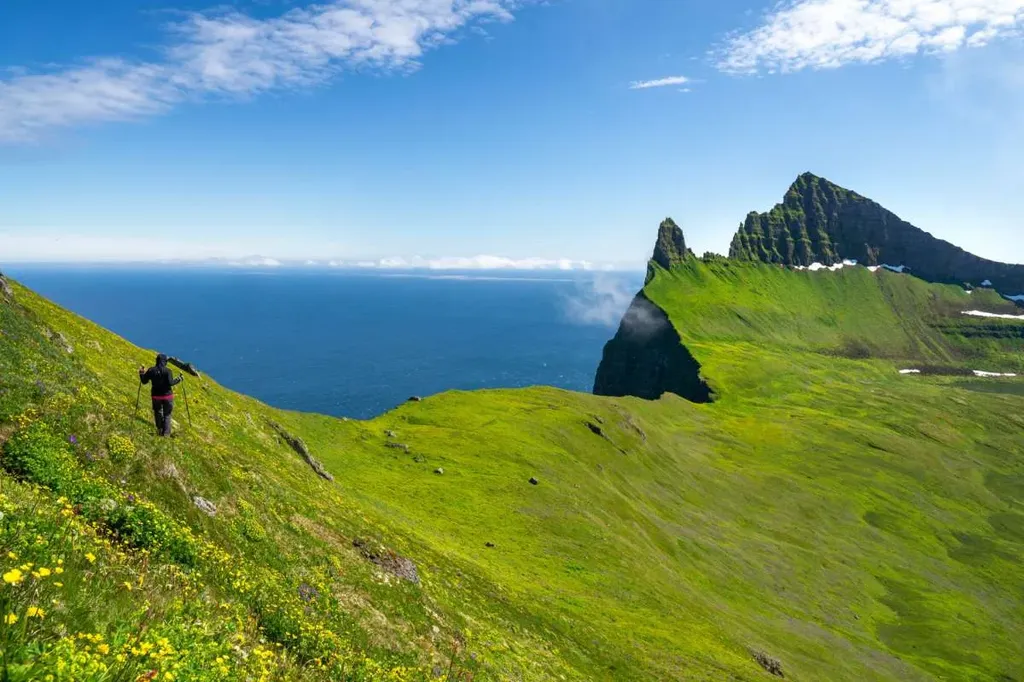
Viknaslodir Trails
There are many Iceland backpacking trails in the East fjords that may take between 5 and 10 days for you to explore. These trails are collectively referred to as Viknaslodir, which means the “trails of the deserted inlets”.
With the trails totaling 90 miles (150 km), Viknaslodir is considered to be the best destination if you want to go hiking across Iceland. You can only hike here in the summer months, as the roads going towards East Iceland are closed in winter due to heavy snow.
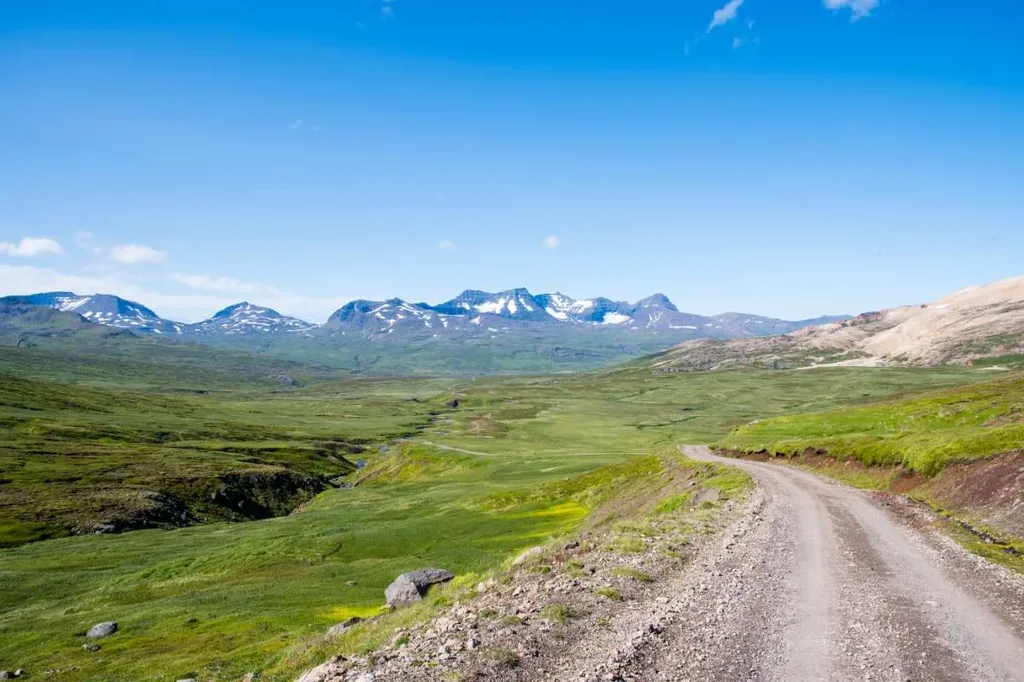
Storurd Trail
This Iceland backpacking trail in East Iceland is considered a moderately challenging trail. Bear in mind, it has many steep sections. The circular route takes an average of five to six hours to complete and is 10 miles (17 km) long.
It’s definitely a trek to do in summer, though, as the snow on the trail will cover important markings could prove treacherous. Those who do take on the trail will be rewarded with a staggeringly vast wilderness. There are little to no other hikers, but you might come across a herd of Icelandic reindeer instead.
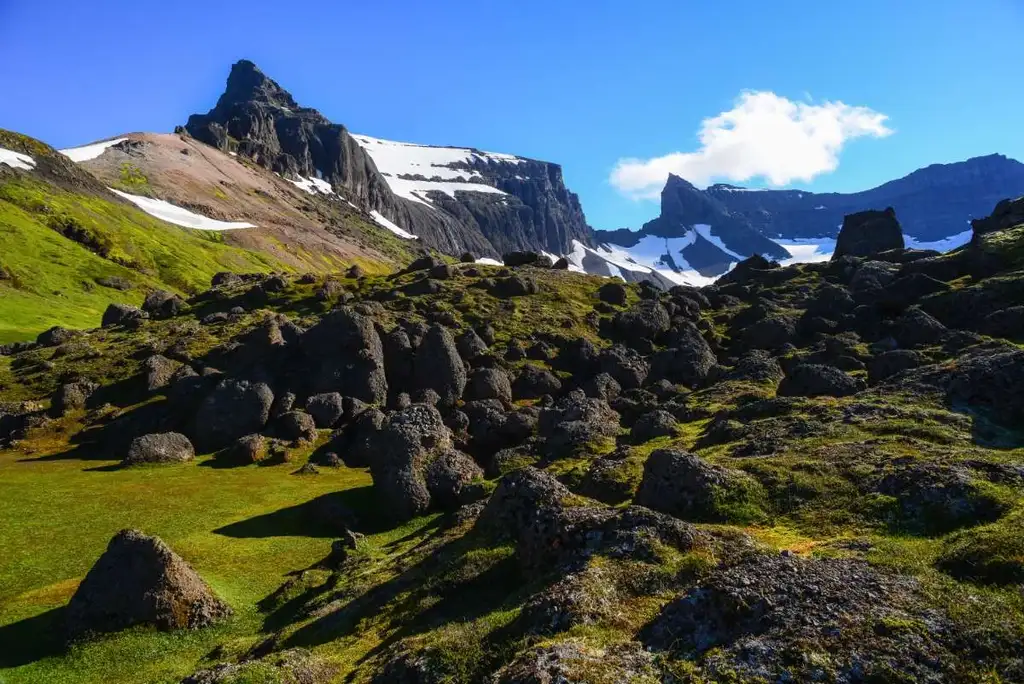
The Best Day Hikes from Reykjavík
For those of you staying in the capital of Reykjavík, here are the top 10 best hikes near Reykjavík that can be completed in a day:
Organized Trekking Tours In Iceland
For those of you who feel less confident about embarking on a hike by yourself, there is always the option of joining an organized backpacking trip in Iceland. One of the benefits includes:
- Having a guide who is experienced if something were to go wrong,
- A structure to the hike, so you don’t miss something worth seeing,
- The pace of the hike will be adapted to suit the group,
- A guide may share educational information about the flora, fauna or geological area,
- Making friends with other hikers in the group.
Organized tours don’t have to be walking; there are many other options when it comes to exploring this beautiful country. Riding Icelandic horses is a very popular activity, especially as Icelandic horses are a unique and special breed. If you’re less of an animal person, then maybe try a bike tour of Iceland.
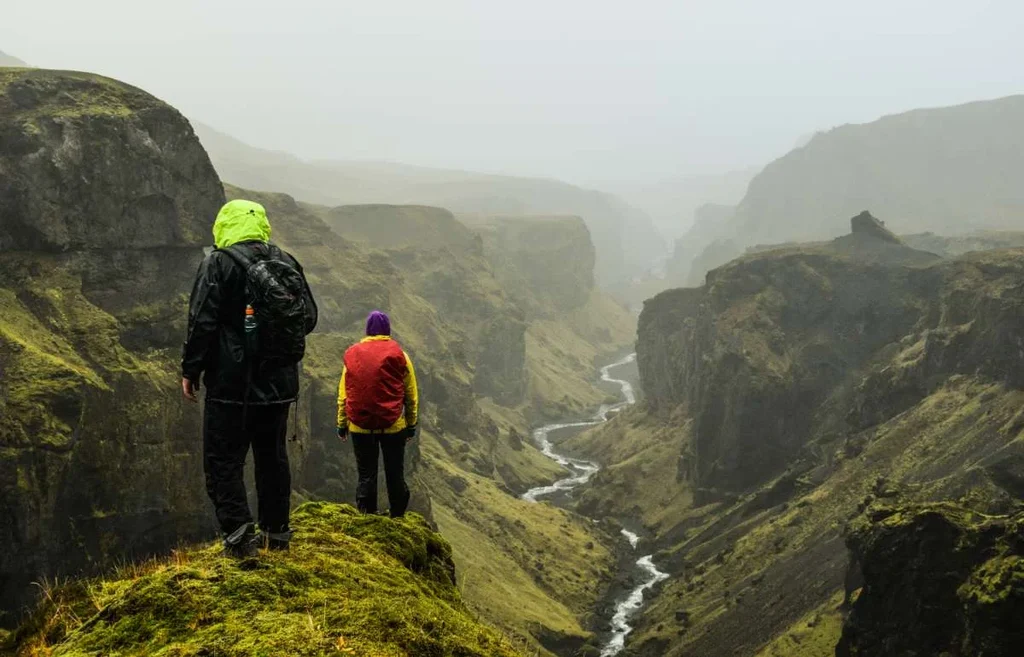
Put Your Best Foot Forward
Ready to make your choice? Whether that’s hiking solo, arranging your own hike, or joining an organized group, you’re much better prepared after reading our Iceland hiking guide. Time to jump in feet first (no pun intended!), book your holiday to Iceland, and start discovering the hidden gems of Iceland.




